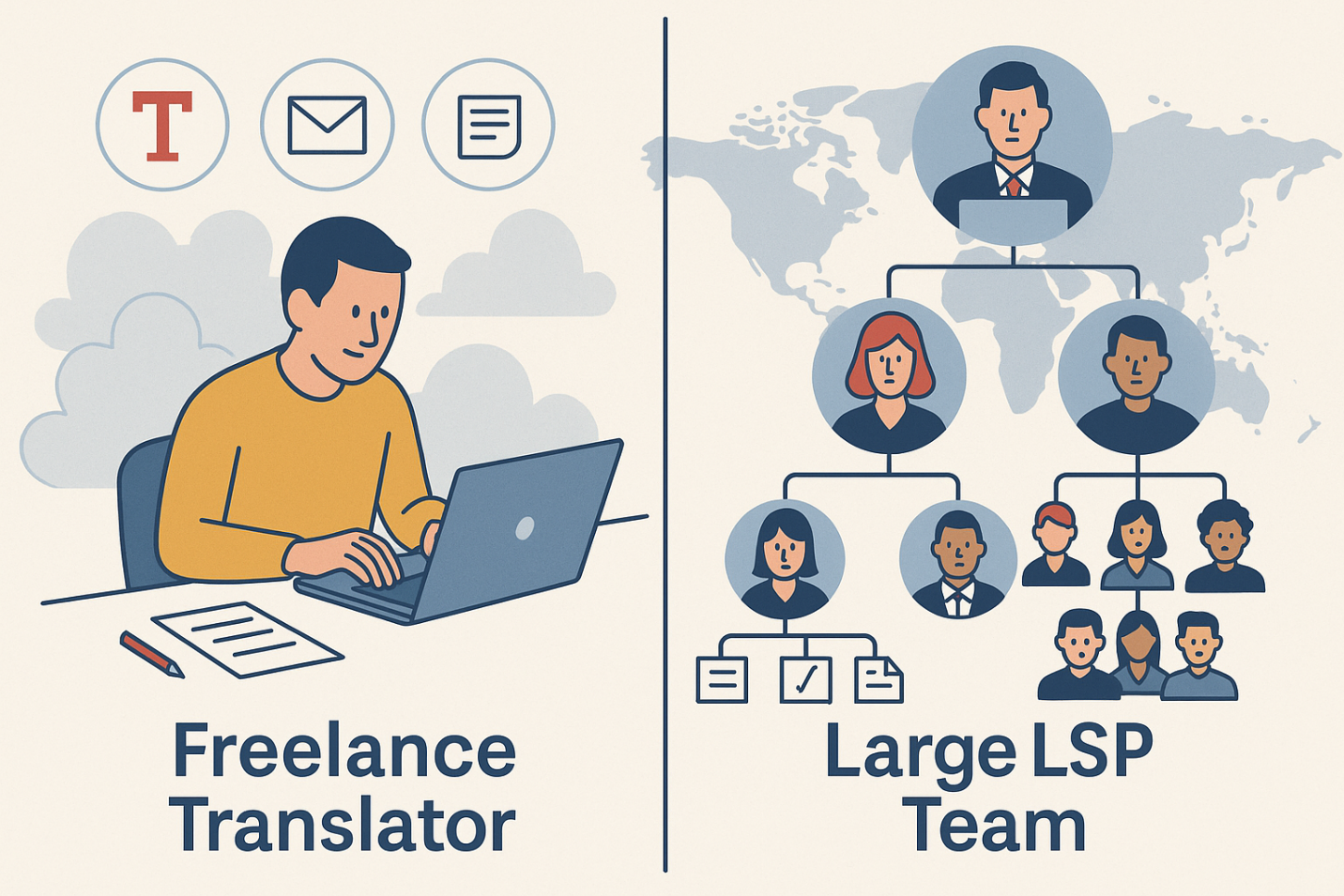
We regularly talk to the heads of translation agencies, both in private and at conferences. During these conversations, the thought inevitably pops up: yes, of course it is good to have a translation business management system, but it is difficult to implement, and so it is easier to continue using Excel or Google Spreadsheets. Some people even make do with a physical board, listing the current projects with felt-tip pens.
What do we mean by “difficult”?
I will implement such a system, just not today...
We have already written about this invisible barrier: the head of an agency is well aware of the benefits of such a system, but he or she can never find the time to implement it. The head is constantly busy doing something: be it financial issues, or negotiations, or immediate managerial tasks. Everything needs doing urgently, and there is no time to implement a management system. But the paradox is that there is no time precisely due to the absence of such a system, as you have to manually do many tasks that the programme could do automatically in a matter of seconds. This is that the Catch-22.
So the problem here is perception: you need to escape from your routine and take a strategically important step: instead of urgent, but not very important tasks, you need to do important, but not very urgent tasks.
This requires some kind of incentive. You need, for example, to be worried that the company is not growing, while competitors are marketing their services more aggressively. Or, conversely, you need to set the goal of raising your agency to the position of market leader, which is impossible to achieve without a project and business management system.
And you need to learn how to use it...
Apple spends billions of dollars to design its hardware and operating systems in an effort to make them intuitive. And its amazing sales figures clearly attest to the value of the company’s designers.
But when an Android user tries to use an iPhone, he or she begins to randomly press buttons and gets annoyed, simply because he or she is used to another system. The buttons are different and they don’t work in the same way.
This also works the other way round: Apple fans get annoyed when they try to use an Android smartphone for precisely the same reason.
The situation with translation project management systems is similar.
Users familiarize themselves with the new system as follows. When launching it for the first time and registering an account, the potential user already has an idea of how it should work as he or she has already used another system and gained some experience in it. But the new system has a different interface and is as a result annoying to use.
Having worked out what is what, the user presses a couple of buttons. Of course, they do not work as expected, and, cursing, he or she closes the program, exclaiming: “It’s just too complicated!”
The paradox is as follows: the system developer makes a lot of effort to simplify the interface, provides instruction texts, screenshots and videos, the support service is ready to promptly answer any question that may arise, set up an online meeting and demonstrate the system’s benefits — but most new users will not write to support and will not watch the two-minute video. They open the system, decide that “it is too complicated to use”, and close it forever.
You still have to learn how to use the new system...
If you know how to drive a Toyota car, you can quickly get comfortable in a Ford car. Some controls in the new car will be located in a different place: the dipped beam lever, the hazard warning light button, the window winder will be in different places, and you will need to get used to this. But the main controls — the steering wheel, brake and gas pedals — are almost the same as in the Toyota. It will be easy to get used to the new car.
Translation project management systems work the same way: If you have already used one of them, it will be easier to learn how to use a new one: You will find that the general system logic is straightforward. Your experience working in another system works to your advantage.
However, it is important to understand that: you will have to spend some time learning how to work in any system, even the most intuitive ones. You can simplify the system interface as far as possible, but its simplicity only shortens the learning curve, and does not eliminate it. You need to be willing to take the time to learn how to use the system.
If you have never driven a car, you will need to put a lot more effort into learning to drive. The same is true for management systems: learning from scratch is more difficult than learning to use a different system. But in the future, the time you invest will pay off.
After all, this is how it always is...
There are many things in our worldview that we are not aware of. For example, once upon a time people not only did not know that the Earth is spherical, but did not even suspect that it could be anything other than flat: it was beyond their worldview.
Many owners of translation agencies, especially small ones, fall into a similar trap: they simply cannot imagine the enormous benefits that a translation project management system can bring their agency. After all, they claim that “EVERYTHING is working just fine as it is”. But just ask them a few questions — and it turns out that they have a very narrow understanding of this “EVERYTHING”.
For example, people who keep records of projects in Excel are convinced that translation project management systems are pretty much just an enhanced version of Excel with additional buttons and menus. They have no idea that the system is capable of performing a host of other operations that Excel cannot do. It can send emails to clients and translators automatically, generate financial documents, transfer files from the translator to the editor, prepare financial reports and perform dozens of other routine actions, freeing up valuable time.
So those people who say “EVERYTHING is working just fine as it is, Excel does the job”, don’t even realize how much management systems simplify the work of the head, managers, accountants, and do not include these “perks” in the concept of “everything”.
When learning about the functionality of a translation project management system, you need to be ready to expand your horizons. It is likely to provide a solution to problems that you have not even encountered in your agency, and which will only emerge five years down the road.
By implementing the system, you are not just starting to work in a new program. Together with the system, you are buying effective management processes that have most likely not yet taken shape.
In view of the above, the need to spend time learning the new system should be welcomed: new knowledge opens up new possibilities.
Managers dig in their heels...
Another argument against implementing a new system is thus: “I want to implement a translation business management system, but my managers will not be happy”.
Looking from the outside in the situation looks like this:
- The head of a translation agency clearly sees the benefits of introducing a new system and understands that it will help the company to operate more efficiently.
- Translation project managers look at some aspect of the company’s operations and are sure that implementing the system will cause corresponding problems.
Managers who do not see the full picture are in the position of ancient people who do not realise that the Earth could be round. They develop tunnel vision: they don’t know what problems the head, accountants, resource managers, system administrators, etc., commonly encounter. Expressing their opinion about the system, they proceed solely from their own point of view, not considering the challenges other employees have to address, and sometimes without even knowing what they are.
In addition, people simply do not like to leave their comfort zone. By default, they tend to work the way they are used to — and here you come with your changes. The first natural reaction is to resist the changes, especially if it is not entirely clear how they will help the business in the future.
If you, as a leader, succumb to the emotions of your employees, you will get nowhere. You will have to use your right as the leader to make the changes despite the resistance. You are a leader, right? So lead by example!
This is not a call for authoritarianism and the principle of “because I say so”. Ideally, you need to find out what each project manager is concerned about, and take his or her opinion into account. But you are unlikely to be able to talk to everyone — you simply do not have enough time. If you see the benefits of implementing a translation business management system in your company, you will have to deal with the complaints of your employees.
People usually do not like change, but they are happy to benefit from changes if they turn out to be successful.

.png)



